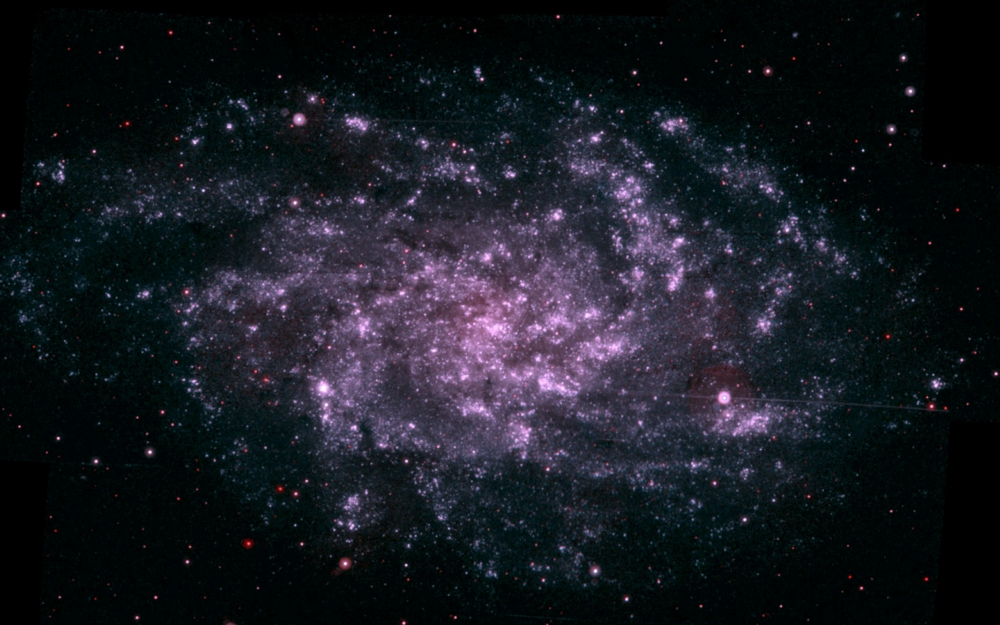
 Credit: NASA/Swift/Dr. Stefan Immler
Credit: NASA/Swift/Dr. Stefan Immler
Peeking in on the Neighbors
You can see new things through different colored glasses. The Swift observatory, primarily a gamma-ray burst hunter, has many different ways to view the Universe, including an ultraviolet telescope, called UVOT, designed to study the afterglows of GRBs. But GRBs occur every few days, so there's often times between bursts that the Swift telescopes can be doing other useful things. The image above is an image in ultraviolet light of M33, a small companion galaxy of the Andromeda galaxy, M31. The UVOT mosaic shown above is composed of 13 individual snapshot observations (lasting about 20 minutes each) in three different filters, and covers the entire disk of the galaxy. The resulting image is one of the best ultraviolet observations of any galaxy obtained to date. The ultraviolet radiation is mostly emitted by young massive stars, so this image helps astronomers understand where young massive stars form, and where they go to die.
<
HEA Dictionary ● Archive
● Search HEAPOW
● Other Languages
● HEAPOW on Facebook
● Download all Images
● Education ● HEAD
>
Each week the HEASARC
brings you new, exciting and beautiful images from X-ray and Gamma ray
astronomy. Check back each week and be sure to check out the HEAPOW archive!
Page Author: Dr. Michael F. Corcoran
Last modified Tuesday, 27-Feb-2024 10:06:45 EST


